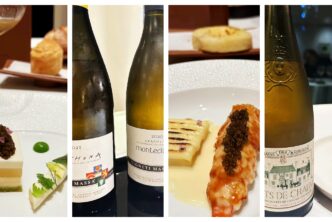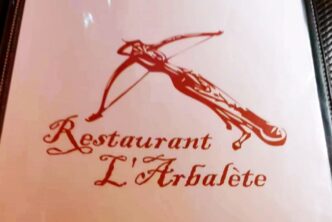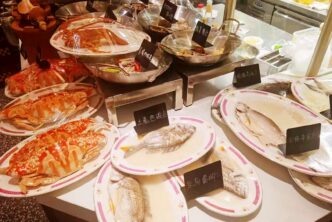Jiu-Si Chinese Bistro
1F, Hyatt Regency Hotel, Building 3,
No. 88 Huachi Street, Suzhou, China
Tel:+86 (0512)6288 1234
The dishes
Stir-fried yellow beef
Steamed fish head with diced hot red peppers
Fried Pork with Peppers
Egg in Vinegar sauce
Dry pot cauliflower
Changsha stinky tofu
The wines
GuoXi Yuan Hong Yellow Wine 90
SE-P Nine years old vintage Red Koji Winter Wine 92
Huijishan Shanniang Yellow Wine 92
Guoxi 28 Yellow Wine 93
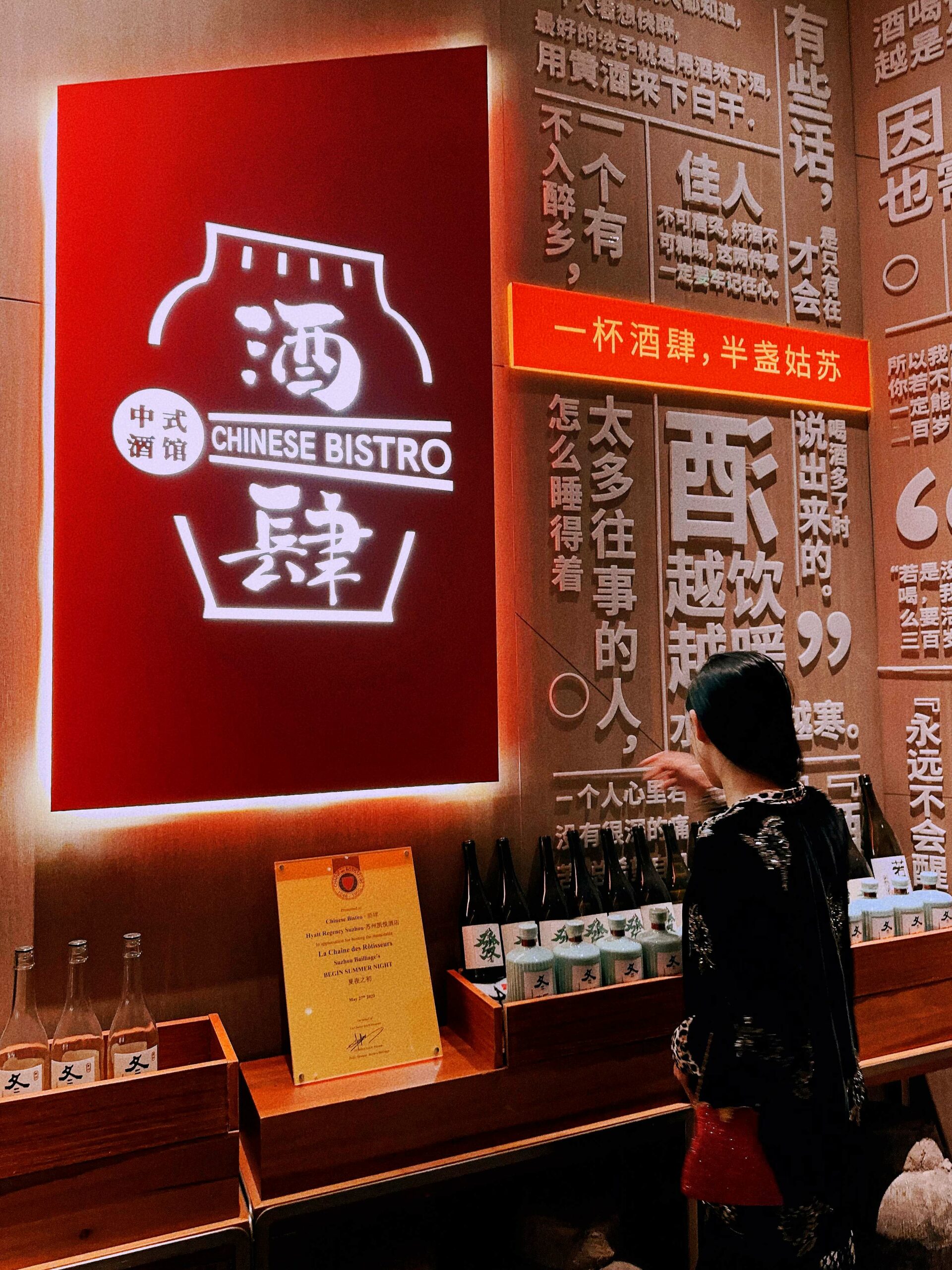
Jiu Si – Chinese bistro, located on the first floor of the Hyatt Regency Suzhou, is Suzhou’s first yellow wine-themed Chinese bistro, opening in 2020. It is a really unique and magical place, taking diners back in a 3,000-year journey through the beginning and growth of China’s oldest yellow wine culture. To this end, Hyatt Regency Suzhou’s wine-seeking squad [including: Henry (Chen Tao), former Food & Beverage Director at the Hyatt who has now moved on and is the Nanjing Andaz Hotel Executive Assistant Manager of Food & Beverage; Executive Chef Lao Wang (Wang Lai Bing), Restaurant Manager Mike Zhang and a team of four to five other staff members]. The team made a total of eight trips to Shaoxing and returned with more than eighty types of yellow wine, including “Sheng Zao”, “Guo Xi Organic Yellow Wine”, and “Yun He”, which just some of the treasures they found. I can vouch for the high quality of the potables they have enriched their wine list with: I have had many Yellow Wines over the years, and I can say that the selection at Jiu-Si is excellent. Alos very impressive and to the team’s credit, as well as the managwers at this specific Hyatt, is that in addition to the wide and outstanding selection of yellow wines, Jiu-Si also has a good wine list entirely devoted to selected wines from many of China’s outstanding regions, from Ningxia, to Beijing Huai Lai, Shandong, Xinjiang, Yunnan, and even Shanxi. All of China’s best names in wines can be found on this wine list: there aren’t too many restaurants in much bigger cities than Suzhou that have this many Chinese wines on their wine list. You understand the attention to detail, the drive to do things well that is in place here: in other words, you can feel that this is a Chinese bistro with heart and soul.
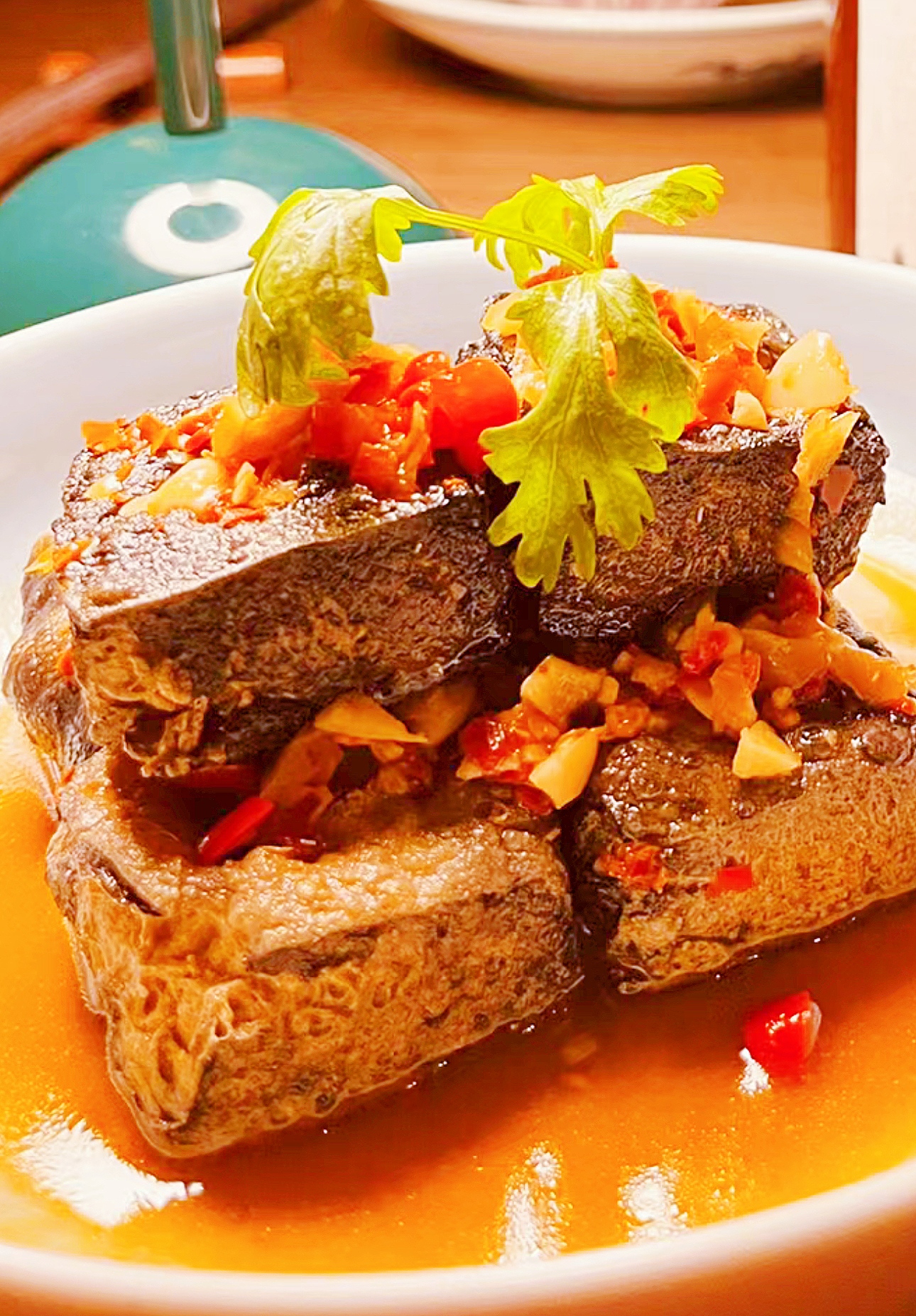
The cuisine at Jiu-Si is that of the Hunan province, and there are both good wines and good dishes here. Hunan Cuisine is one of the eight major cuisines in China and has an extremely long history. It took shape as we know it today during the Han Dynasty (in the Xiangjiang region and Dongfang region). Its local dishes from Xiangjiang region, Dongting Lake Xiangxi coteau are flavourful and often extremely spicy. Due to its geographical location, Hunan has a mild and humid climate, and people like to eat chili peppers there to refresh themselves and remove dampness. The dishes prepared with pickles and chili peppers are appetizing and refreshing, and are very popular.
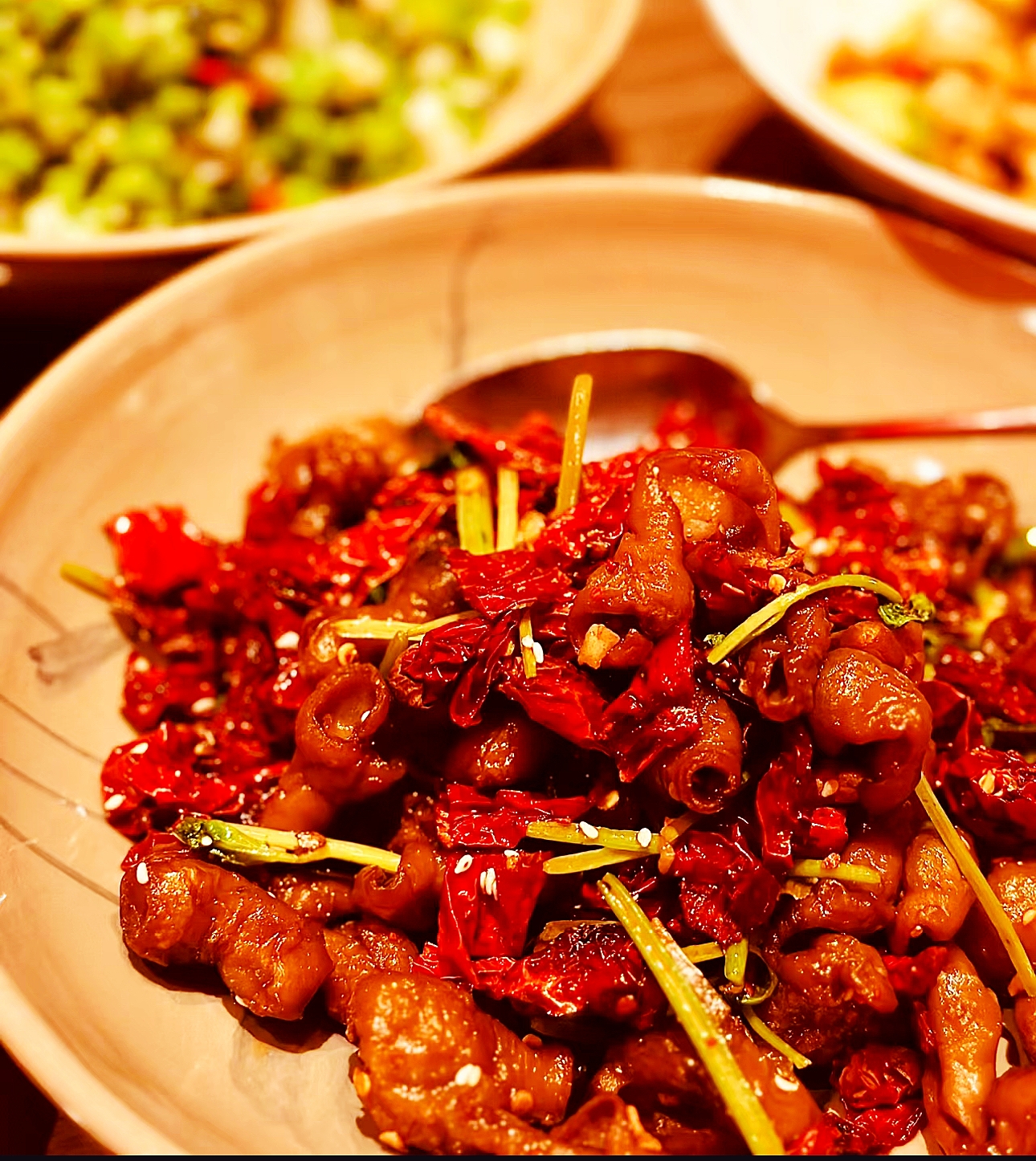
Chili, pepper and shallot are essential ingredients in this cuisine. At Jiu-Si Chinese Bistro, I was most impressed by the stir-fried yellow beef, which is commonly found in many Hunan cuisine restaurants of all shapes and sizes. The yellow beef for this dish is a better choice than buffalo meat, that was also used locally traditionally, but yellow beef is fluffier and richer in fat, compared to buffalo meat that is tighter, with thicker muscle fibers, and has a lower fat content. In addition to the beef, chili peppers are also a big part of the essence of stir-fried yellow beef. Three kinds of chili peppers need to be prepared: thread pepper, millet chili and pickled wild pepper. Thread pepper is used to enhance the fresh flavour of the chili pepper; millet chili is mainly used to provide the spicy flavour; and pickled wild pepper is to provide its sour flavor, so that the taste buds can better appreciate and enjoy the layered flavours of the different levels and types of spiciness present.
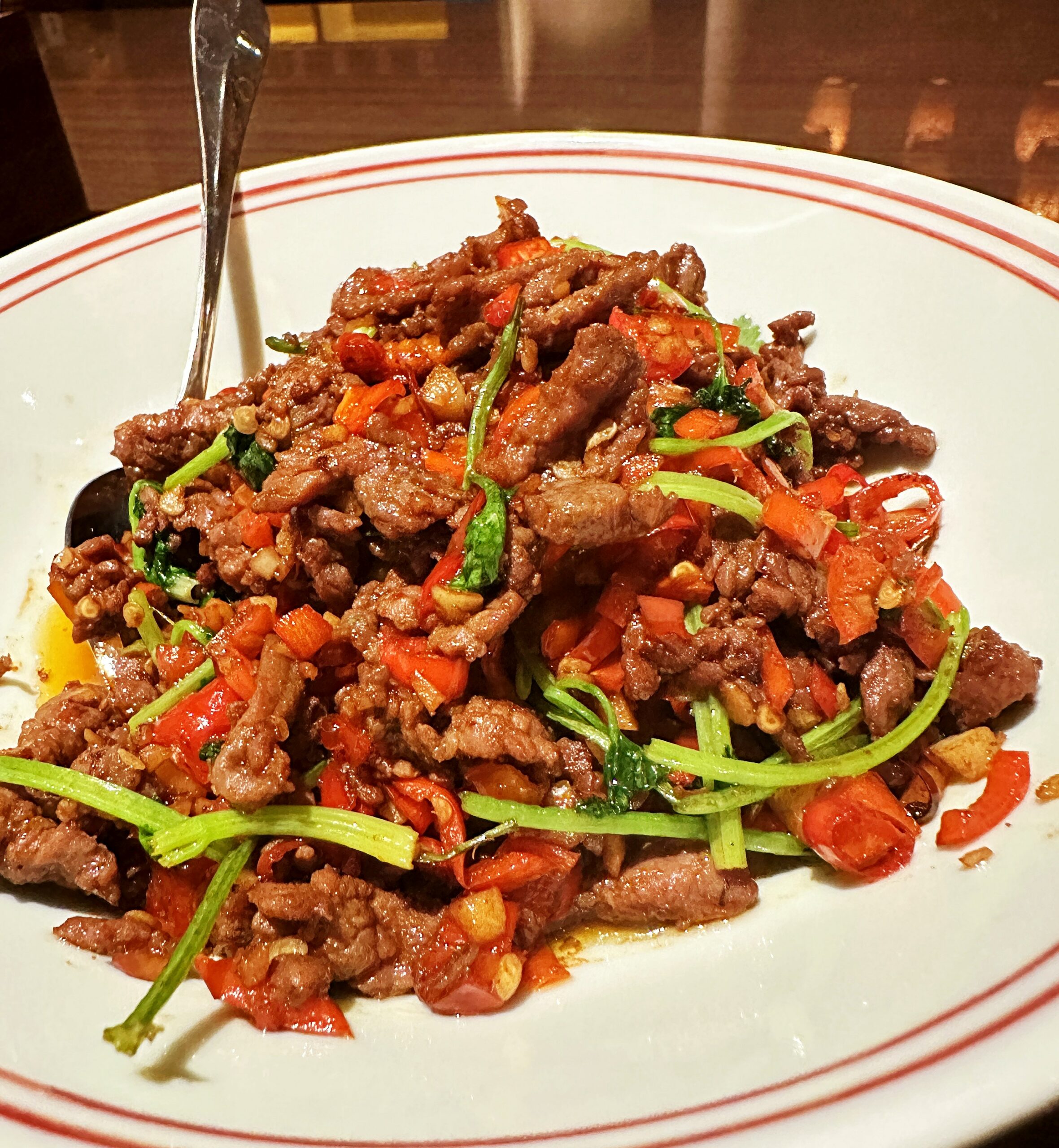
Clearly, cooking technique is also very important in getting this dish right: you need to stir-fry the beef quickly over high heat to retain the juices without overcooking it. This dish goes well with rice: at Jiu-Si , sti-fried yellow beef is so perfectly rendered that you’ll need to be careful when ordering it, because you’ll find yourself eating two more bowls of rice before you know it. The rest of the dishes I treid on this night were also very satisfactory, especially the Eggs in Vinegar sauce.
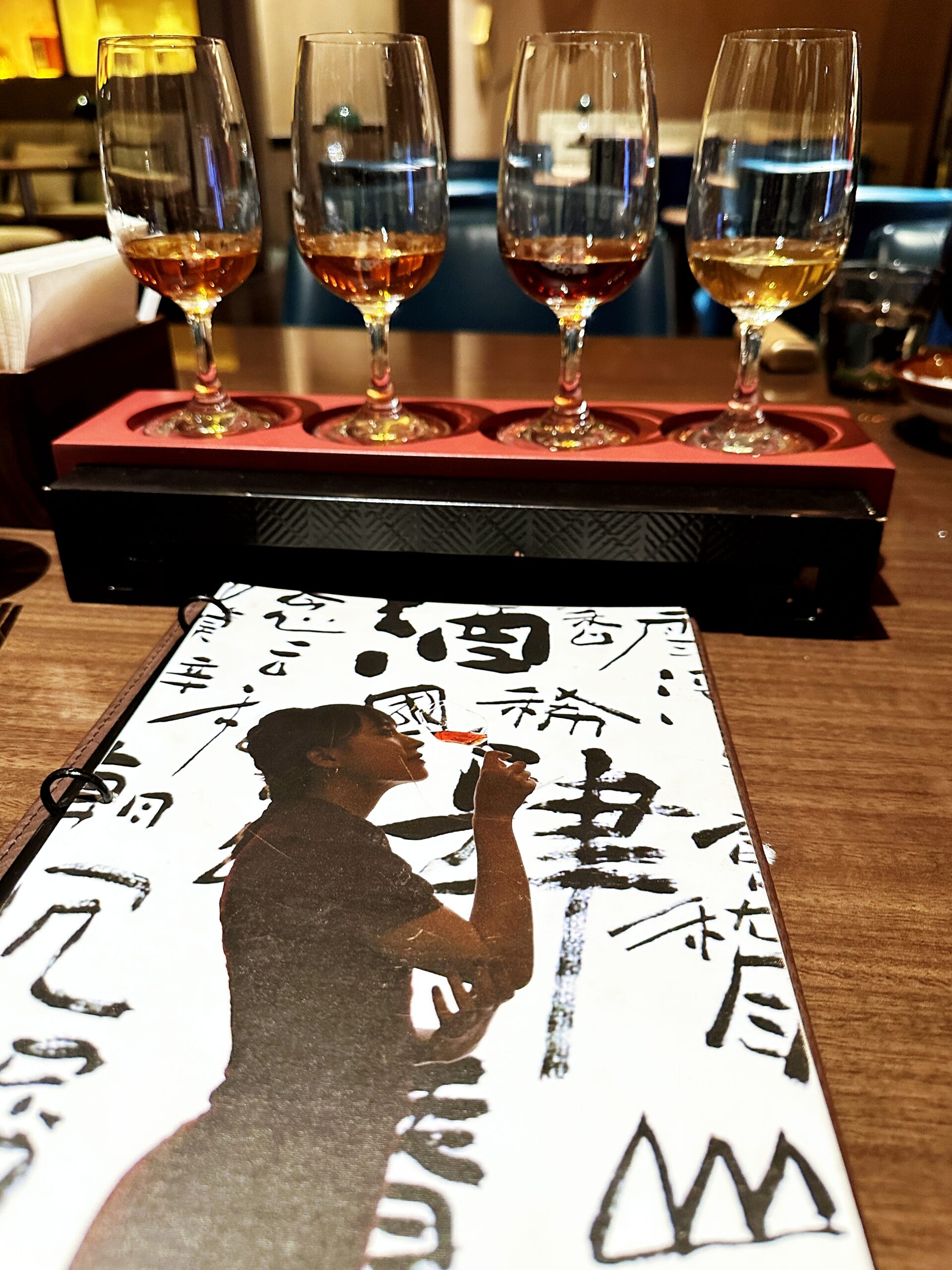
Not just the food, but the wines were excellent too. Yellow wines, called Huangjiu in Chinese, actually come in a variety of styles and range of colours, some bordering almost on the reddish-brown. Made by fermenting glutinous rice, water and a wheat-based yeast, they are available in a range of dryness and sweetness: dry, off-dry, semi-sweet and sweet. Think of them as variations of Sherry and/or Vernaccia di Oristano: some Yellow Wine will remind you of, for example, Finos, others of Amontillados, some of Olorosos you might have tried and some even of something sweeter, though in general Yellow Wines are never as treacly and sweet as anything made with Pedro Ximenes. The GuoXi Yuan Hong Yellow Wine is a classically dry wine that despite it being classified as a “dry wine”, there can be as much as up to 15 mg/L of residual sugar in Yuan Hong, but its texture , aromatic molecules and acidity are such that it really does taste basically dry. The wine’s name is derived after the vermilion-colored lacquer painted on the wall of the altar used to contain the wine. It has a very pretty pale orange-yellow color, very transparent and shiny. On the nose it smells a little like a Fino Sherry or a Vernaccia di Oristano, with oxidative notes but without any related to the presence of flor and none related to nutty sensations. In the mouth, it hints at just a touch of residual sugar and slightly bitter finish. This light-bodied, high-acod but balanced wine is especially suitable for vegetables and cold dishes. The SE-P Nine years old vintage Red Koji Winter Wine is a dry wine from Fujian province with an alcohol content of 14% by volume, so it’s no wimp; but again, this was so well-balanced all those octanes were hardly noticeable. The wine has a natural light, warm, amber colour. The aroma is deep, rich and sweet reminding me of the aroma of fermented glutinous rice. Very mellow in taste, there are hints of almond paste, hazelnut and white chocilate, as well as a touch of smoky flavour. The aftertaste has a soybean-like fermentation aroma and is very long. The Huijishan Shanniang Yellow Wine Shanzhao is a semi-sweet yellow wine. Created in 1892 (in the eighteenth year of the Qing Dynasty) by Shen Youshan, fifth generation of the Shen Yonghe Winery, it was inspired by the double set of mother-and-child soy sauce fermentation method. Shanzhao uses dry Yuanhong wine instead of water in the fermentation process of the yellow wine, resulting in a yellow wine with a high sugar content and a more rounded and full-bodied wine. Bright amber color, it has a strong, penetrating aroma, and tastes very sweet and mellow. Hints of herbs, almonds and soy sauce on the palate are nicely framed by a very nice sweetness and a creamy, long mouthfeel. It is the best wine to match with meat and vegetables, especially white meat like chicken and duck. Last but not least, the Guoxi 28 Yellow Wine is a really unique Yellow Wine that has as much in common with an Armagnac or fine Single Malt Whisky as it does with wine. China’s first organic yellow wine, it is very rich and deep, made with five-year old yellow wine concentrated and purified to develop rich flavour complexity. Beautiful deep amber colour, boasting mellow aromas and rounded flavours of a traditional yellow wine and an intense flavour similar to that of distilled spirits such as brandy or Oloroso sherry, plus licorice, vanilla notes and a hint of burnt bark. Pair it with a rich sauce based on crab roe or with hairy crabs.
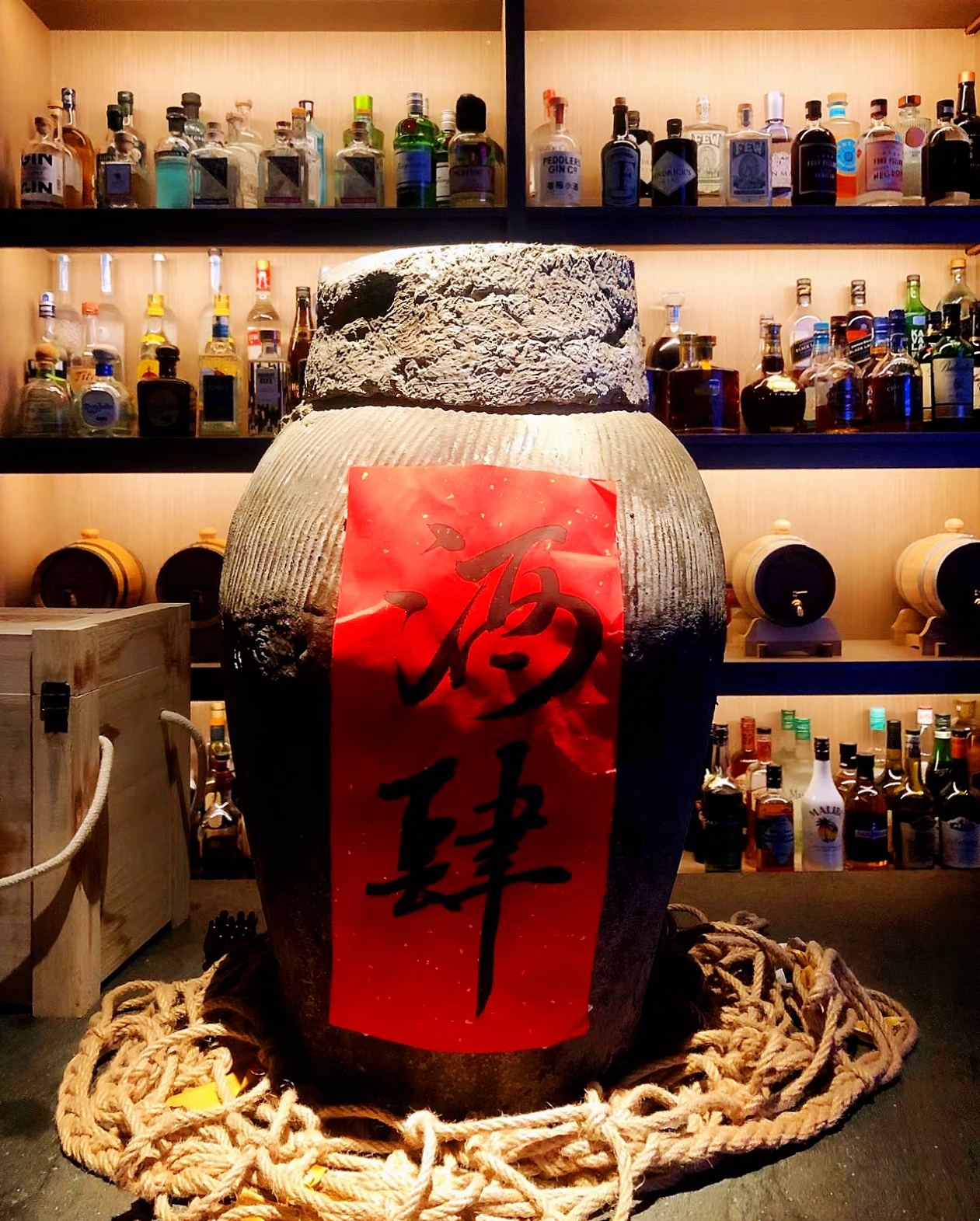

 中文
中文
